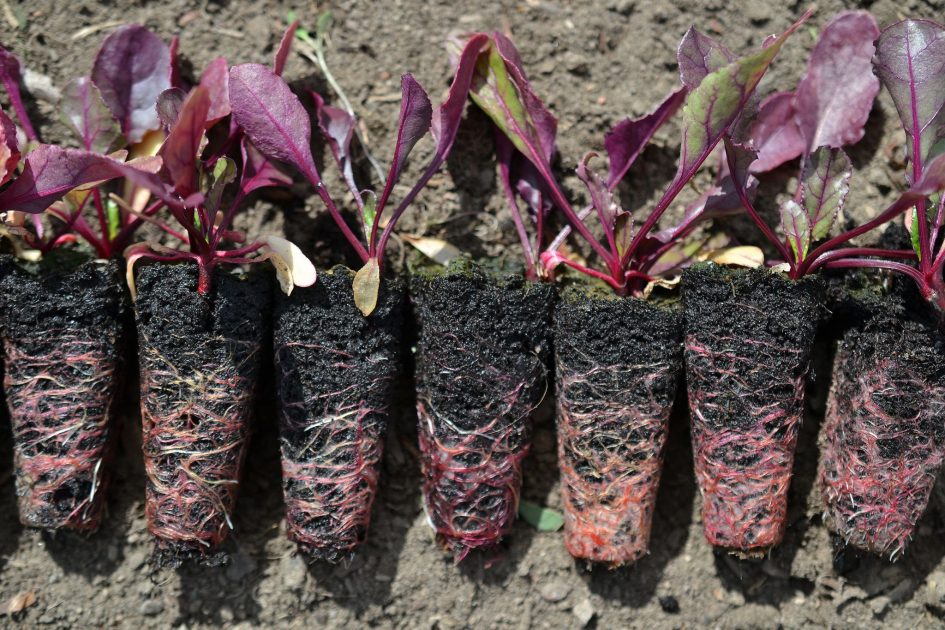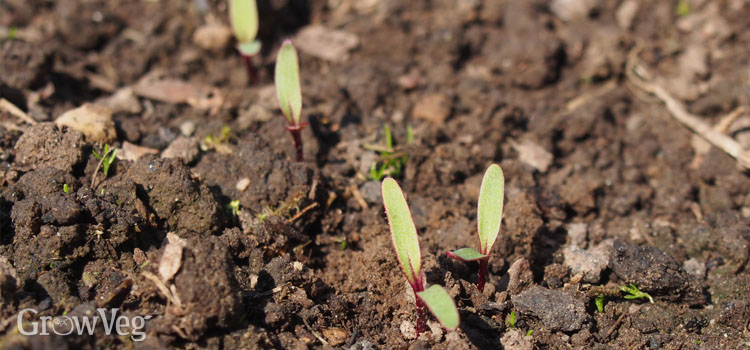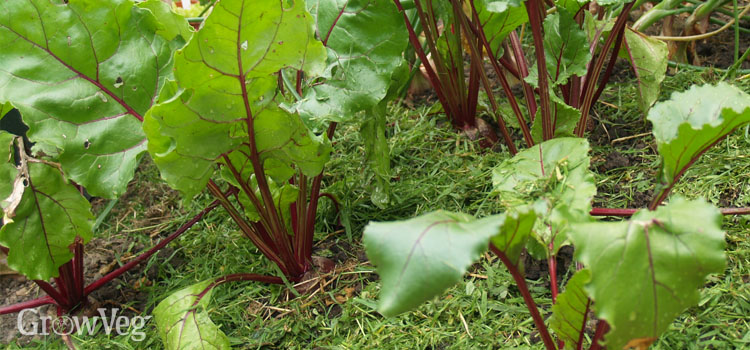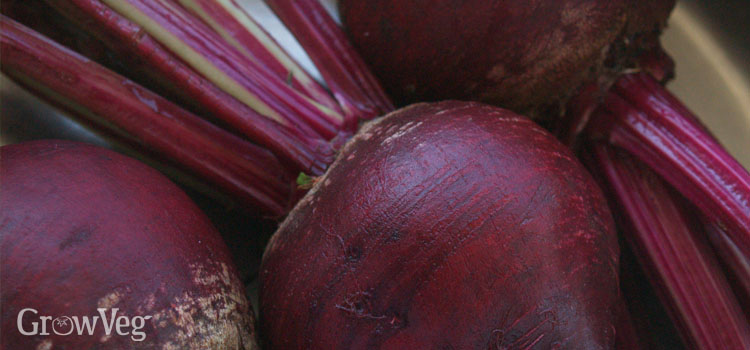Beetroot is a delicious and nutritious root vegetable that can be grown easily in home gardens. When grown from seed, beetroots typically take 50-70 days to reach maturity and be ready for harvesting. However, the exact timeframe can vary depending on several factors like variety, time of sowing, soil conditions, and climate.
In this comprehensive growing guide, we will look at:
- Ideal conditions for growing beetroot
- How to sow beet seeds
- Days to maturity for different beet varieties
- Tips for quick beetroot growth
- Signs that beetroots are ready to harvest
Ideal Conditions for Growing Beetroot
Beetroot thrives in cool weather and performs best when daytime temperatures are in the 60s or 70s F. Temperatures above 80 F can cause poor germination slow growth and low yields.
The vegetable prefers full sun exposure (at least 6 hours per day) and fertile, well-drained soil with a pH between 6.0-7.0. Heavy clay soils often impede proper beetroot development.
Consistent moisture is important especially during germination and early growth. Supply 1-2 inches of water per week if rainfall is inadequate. Excessive heat and drought stress can cause slow growth and woody, fibrous roots.
How to Sow Beet Seeds
Beetroot can be grown from early spring to early summer and again from late summer to late fall. Avoid midsummer heat.
Direct sow seeds in the garden 1/2 inch deep and 1-2 inches apart in rows spaced 12-18 inches apart. Thin seedlings to 3-6 inches between plants after they sprout.
For a continuous harvest make small successive sowings every 2-3 weeks.
You can also start beet seeds indoors 3-4 weeks before the last frost date. Transplant seedlings to the garden when they have 2-3 true leaves.
Days to Maturity for Beet Varieties
Days to maturity ranges from 50-75 days depending on variety Here are some popular options and their growth timeline
- Early Wonder (48 days) – quick-growing heirloom; round red roots
- Detroit Dark Red (60 days) – globe-shaped red roots with sweet, deep color
- Touchstone Gold (55 days) – golden yellow; sweeter taste
- Bull’s Blood (60 days) – red and white striped roots
- Chioggia (60 days) – red and white rings inside; mild flavor
- Cylindra (60 days) – long, cylindrical red roots; greens also edible
- Blankoma White (75 days) – white flesh; greens have red veins
In general, heirloom and open-pollinated varieties take a little longer than hybrids.
Tips for Quick Beetroot Growth
Here are some tips to help your beetroots size up quickly:
- Prepare soil well with compost and nutrients before planting
- Use row covers at seeding to retain warmth and moisture
- Water regularly to keep soil consistently moist, but not waterlogged
- Fertilize 4-6 weeks after sowing using a balanced organic fertilizer
- Thin properly to avoid overcrowding which slows growth
- Use mulch to maintain soil moisture and reduce weeds
- Avoid excessive heat by planting at appropriate times
Signs Beetroots are Ready to Harvest
- Roots have reached desired size for variety (1-3 inches diameter)
- Shoulders protrude above soil surface
- Skin has hardened and roots resist piercing when squeezed
- Tops look healthy and vigorous
- Days to maturity has been reached for variety
The exact day count varies, but most beetroots are ready to pull in 7-10 weeks after sowing seeds. Check your variety’s maturation timeframe and monitor root size.
For the sweetest flavor, harvest when beets are young and tender. Larger, overgrown roots tend to be woody and fibrous. The greens are also best when plants are young.
With the right growing conditions, beetroots typically take 50-70 days from seed sowing to reach maturity. Focus on consistent moisture, ideal temperatures, and proper spacing for quick growth. Monitor root size and days to maturity to know when your beets are ready for harvesting. Growing your own beetroots results in tender, deliciously sweet roots that store well and provide fantastic nutrition.

Sowing Beetroot Seeds
What looks like a single spiky beetroot seed is actually a protective capsule enclosing two or three true seeds. This means that for each seed capsule you plant, you will need to snip off at least one seedling with scissors or a sharp knife, to give the remaining seedling the space to grow on.
A few beetroot varieties are available which produce just one seed per capsule, thereby avoiding the need for thinning. These are known as ‘monogerm’ varieties and will usually be marked as such on the seed packet.

Sow beetroot in rows 10cm (4in) apart, with a row gap of 20cm (8in), or in blocks 15cm (6in) apart each way. Make a hole about 2cm (1in) deep with a dibber or your finger then drop the seed capsule in. Be patient: beetroot can take a little while to germinate, especially those earliest sowings. Germination can be patchy, so if there are any gaps after germination just pop in new seed capsules.
Pre-warming the soil with a cold frame or horticultural fleece will help you to get the earliest sowings off to a good start, but don’t be tempted to start beetroot seeds too early as this often results in the plant ‘bolting’ (flowering), which means that the vegetable is past its prime. Our Garden Planner can advise you on when to sow beetroot (and lots of other crops) in your area, using climate data from your nearest weather station for maximum accuracy.
For a continuous supply of beetroot sow short rows or small blocks of beetroot at intervals over the summer.

Cooking and Eating Beetroot
Foodies will tell you that beetroot should taste ‘earthy’, but I have a sweet tooth and prefer a sweeter beetroot (the variety ‘Boltardy’ never disappoints). Roasting beetroot is a trendy way to prepare it, but I find that boiling preserves a sweeter flavour – try both methods though, as your preference may differ to mine.

Fresh, boiled, roasted or pickled – how you prepare your beetroot is up to you! Why not grate the raw roots and pair with the young leaves in a salad, make soup, or even – I kid you not – bake a cake?
It’s worth mentioning that as well as the traditional red beetroot, yellow and white varieties are available which won’t stain your fingers.
If you have a favourite beetroot recipe or a variety that does exceptionally well for you, please share it in the comments below – we’d love to hear about it!
How to Grow Beets (From Seed To Harvest)
FAQ
How many beets will grow from one seed?
Beet seeds are capsules that contain several seeds, so each one may yield two or three sprouts.May 15, 2025
Do beetroots like sun or shade?
Beetroot prefer a position in full sun. They will grow in light shade, but avoid areas that get no direct sun at all. Improve the soil by digging in well-rotted compost – avoid manures and other fresh soil improvers as they can lead to bolting (going to seed early) or the roots not developing correctly.
What is the best month to plant beetroot?
If you’re growing in a warmer climate, late summer or autumn is a superb time to sow beets as these cool-season roots definitely don’t like it too hot – …Sep 9, 2023
Do beets need to be watered every day?
You’ll need to water every day or every other day for 2 to 3 weeks after sowing seeds. Surface watering is ideal to keep the bed moist but not soggy.Nov 8, 2024
How long does it take to grow beets?
Beets are a popular root vegetable that can be grown in a variety of climates and soil types. They are relatively easy to grow and can be harvested in as little as 50 to 60 days.
How long does it take a beet seed to germinate?
Beet seeds will usually germinate within 5 to 7 days in warm soil, but can take up to two weeks when the soil is cool. Soaking beet seeds in water for 12 to 24 hours prior to planting will help them sprout faster. Each beet seed will grow several sprouts, which will need to be thinned – discussed next. Good beet spacing
Can you grow beets from seed?
Growing beets is also easy and they are a crop that can be planted multiple times a year. Growing beets from seed is a rewarding experience that can yield a bountiful harvest of these delicious and nutritious root vegetables. However, to get started, you need to know how to germinate beet seeds properly. Here’s everything you need to know:
How do you grow beet seeds?
A handful of our favorite beet seeds from High Mowing Organic Seeds, nicely organized in our seed storage container. Sun: Beets grow best in full sun, particularly for good root development, so choose a planting location that receives at least 6 to 8 hours of direct sunlight per day. It’s possible to grow beet greens in partial shade.
How do beetroot seeds grow?
During the germination period, it’s crucial to provide the optimal conditions for your beetroot seeds to sprout and establish healthy seedlings. Once the seeds have germinated, they will enter the next stage of growth, which is the seedling stage. The seedling stage is the first phase of beetroot growth.
Can beets be harvested at different stages of maturity?
Yes, beets can be harvested at different stages of maturity. Baby beets, also known as “pickling beets,” can be harvested in as little as 30-40 days, while larger, mature beets take around 60-90 days. You can also harvest beets at various stages in between, depending on your desired size and flavor.
